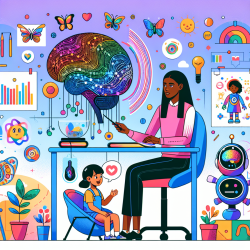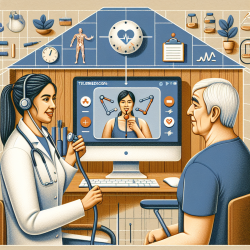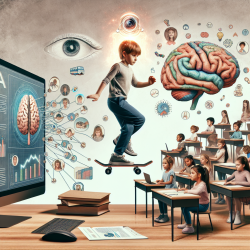Introduction
In the ever-evolving field of speech-language pathology, the integration of technology and data-driven approaches is pivotal in enhancing therapeutic outcomes for children. The recent study titled An AI-empowered affect recognition model for healthcare and emotional well-being using physiological signals provides a groundbreaking approach to emotion recognition through the use of physiological signals, particularly EEG. This research offers valuable insights that can be leveraged by practitioners to improve their skills and outcomes in therapeutic settings.
Understanding the Research
The study focuses on utilizing EEG signals for emotion recognition, which is crucial for understanding and interacting with AI systems in healthcare. By employing advanced techniques such as Discrete Wavelet Transform (DWT) and k-Nearest Neighbor (kNN) models, the research achieved a remarkable precision of 86.4% in emotion recognition. This surpasses traditional methods, which often struggle with the non-linear and non-stationary nature of EEG signals.
Practical Applications for Practitioners
For speech-language pathologists, integrating these findings into practice can significantly enhance the emotional well-being of children. Here are some actionable steps practitioners can take:
- Incorporate EEG-based Tools: Utilize EEG devices that are non-invasive and easy to use. These tools can provide real-time data on a child's emotional state, allowing for more tailored and responsive interventions.
- Leverage AI Models: Implement AI models like kNN for emotion classification. These models can help in accurately identifying and categorizing emotions, enabling practitioners to address specific emotional needs effectively.
- Focus on Data Normalization: Employ techniques such as min–max normalization to process EEG data. This ensures that the data is consistent and reliable, leading to more accurate emotion recognition.
Encouraging Further Research
While the study provides a robust framework for emotion recognition, there is ample scope for further research. Practitioners are encouraged to explore the following areas:
- Experiment with Different Datasets: Beyond the DEAP dataset used in the study, exploring other datasets can provide insights into diverse emotional responses and improve model generalizability.
- Refine Machine Learning Models: Continuously test and optimize machine learning parameters to enhance precision and speed, making them more applicable in real-world settings.
- Collaborate with Multidisciplinary Teams: Engage with experts in AI, psychology, and neuroscience to develop comprehensive models that integrate multiple physiological signals for holistic emotion recognition.
Conclusion
The integration of AI and physiological signal analysis in emotion recognition holds immense potential for improving therapeutic outcomes in children. By adopting these innovative approaches, practitioners can create more effective and personalized interventions, ultimately fostering better emotional well-being in their young clients.
To read the original research paper, please follow this link: An AI-empowered affect recognition model for healthcare and emotional well-being using physiological signals.










